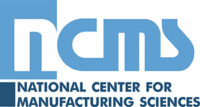NCMS is pleased to announce the finalists of the 2025 CTMA Technology Competition, which supports the National Defense Strategy by shining a spotlight on transformative maintenance and sustainment capabilities. This competition provides an opportunity for academic, commercial, and government teams to showcase new and innovative ways of making maintenance and sustainment operations more agile, effective, efficient, and affordable. As a new addition to the competition this year, NCMS has teamed up with Fleet Readiness Center Southeast (FRC-SE) to seek capabilities in five focus areas: aircraft data integration, laser cutting on aluminum, robotics and automation, surface preparation and corrosion control, and expeditionary repair of aircraft structural components.
The top three finalists, selected by DOD maintenance leaders from a highly competitive field of entries, are presented here in alphabetical order by capability name:
- GRIT Solution for Deployed Aircraft Inspection & Repair by Grey Gecko, LLC
- (Competition Category: Expeditionary Repair of Aircraft Structural Components)
- NDT Tracker for Mobile C-Scan Generation by Cybernet Systems Corporation
- (Competition Category: Expeditionary Repair of Aircraft Structural Components)
- Palladyne™ IQ by Palladyne
- (Competition Category: Robotics and Automation)
The Grey Gecko Real-Time Inspection Tool (GRIT) 125v2.5 is a lightweight, battery-powered non-destructive testing (NDT) system for expeditionary inspection and repair. Using patented spread-spectrum infrared technology, GRIT penetrates coatings over 20 mils thick to detect corrosion, cracks, and deformities—including battle damage and bird strikes—on aluminum, steel, titanium, and composites. It provides real-time, high-resolution imaging without coating removal or complex setup, integrates into existing workflows, and requires just one hour of training. GRIT’s scalable, cost-effective design enables fast detection and repair in the field.
At the US Coast Guard Aviation Logistics Center (ALC), GRIT reduced HC-144 wing joint inspection time by 80 percent (30 to 6 hours), saving $240,000 and 120 labor hours across five 2024 depot cycles while eliminating toxic exposure. On the C-27J, it identified spar cap cracks missed by legacy methods, avoiding $1.2M in repair costs per incident. GRIT is being adapted for USAF C-130s and evaluated on F-35 and H-60 platforms with Lockheed Martin, targeting corrosion and damage on wing skins, fuselage joints, and rotor assemblies. In austere environments, GRIT reduces downtime by 25 percent and labor by over 50 percent, extending benefits across DOD fleets.
The second finalist—NDT Tracker for Mobile C-Scan Generation, by Cybernet Systems Corporation in collaboration with the US Air Force—enables expeditionary repair of aircraft structural components. The NDT Tracker is a mobile, camera-based tool that reduces UT grid inspection labor from two inspectors to one, cutting labor in half. The Tracker eliminates hand-drawn grids and manual recording, using patent-pending AutoClick Combo-Filtering to auto-select accurate thickness readings, reducing average inspection time from 20 to 2 seconds per cell—a 10x efficiency gain. Color-mapped C-Scan reports over inspection area imagery eliminate re-inspections due to miscommunication. The shortened inspection phase accelerates turnaround time and boosts maintenance throughput. The Tracker now operates from 0.5-5ft range with a 4ft x 4ft inspection area extendable via leapfrogging.
The Tracker is in active use at Tinker AFB, Robins AFB, and by commercial MROs like Delta TechOps, ST Engineering, and Aeroman. Aircraft manufacturers (Boeing, Airbus, Gulfstream) are pursuing adoption. The Tracker won the 2024 SAE/A4A International Innovation Award and the 2024 ASNT Cool New Ideas Award by popular vote. This revolutionary tool transforms UT gridding for the Air Force and is poised to impact NDT inspections across the DOD.
The third finalist is Palladyne™ IQ by Palladyne, a closed-loop autonomy software that uses AI and ML technologies to provide human-like reasoning capabilities for industrial robots and collaborative robots (cobots), increasing flexibility and dynamism in assigned tasks without relying on cloud connectivity. Palladyne IQ helps make robots smarter and better equipped to handle jobs that have historically been too complex to automate. Palladyne IQ is designed to enable low-/no-code training for robotic systems: robust training and ML happen on the edge, which supports faster deployment without costly programming resources needed by traditional automated systems. Its edge computing capabilities facilitate autonomous decision-making without needing a connection to the cloud, making Palladyne IQ ideal for deployed and remote operations where network access may be limited.
Palladyne IQ has been awarded a multi-year contract with the Warner Robins Air Logistics Complex, which showcase the product’s usefulness in augmenting industrial robots for aircraft sustainment. Palladyne IQ is being integrated into multiple remediation activities such as robotic media blasting and sanding, proving its real-world viability. These demonstrations represent milestones on Palladyne IQ’s path to full operational deployment, ultimately resulting in a high-impact, scalable solution for diverse military sustainment efforts.
The three finalists will present their solutions in person at NCMS Headquarters in Ann Arbor, MI on June 17. The winner will receive a $100,000 in-kind contribution from NCMS.
A free livestream webinar will provide access to view the finalist presentations. More details about the event will be announced soon. To learn more about the 2025 CTMA Technology Competition, please visit: https://ncms.org/ctma-technology-competition/.




